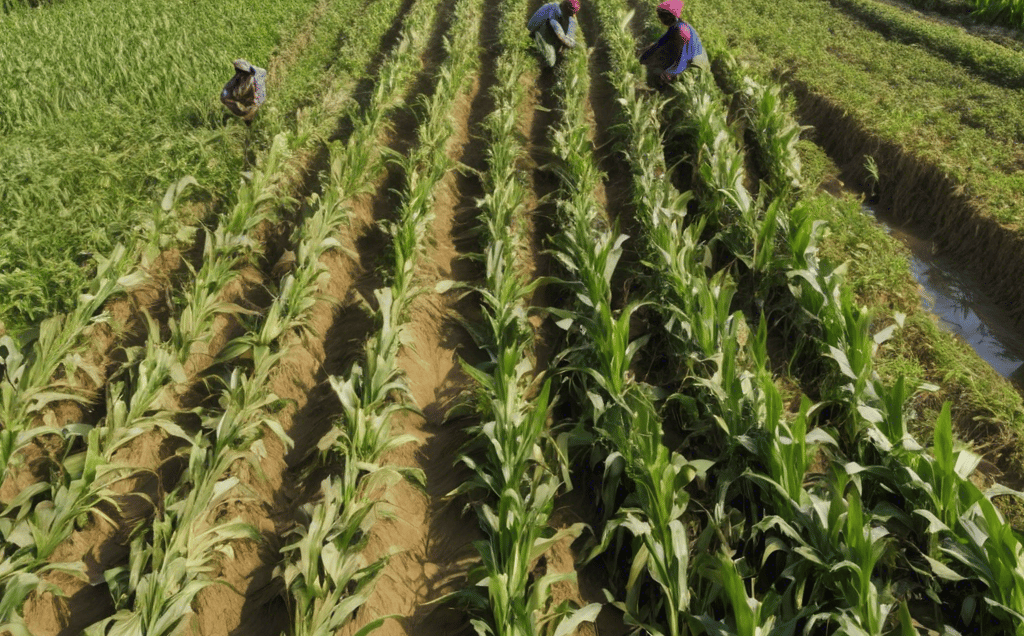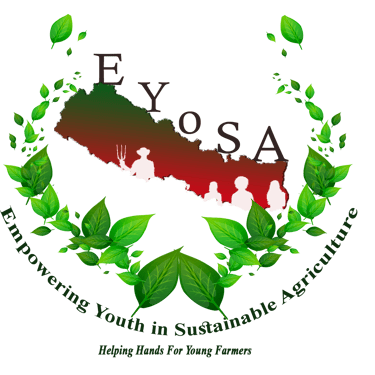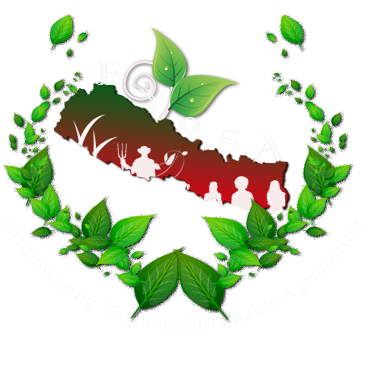Maize Farming and Soil Conservation Practices in Chitwan, Nepal
Maize (Zea mays) is a staple crop in Nepal, playing a significant role in food security, animal feed, and cash crop production. In the Terai region, particularly in Chitwan, maize cultivation has been integral to the agricultural landscape for decades. However, as in many regions worldwide, farmers face challenges related to soil degradation, which threatens the long-term sustainability of farming systems. Sustainable maize farming in Chitwan, therefore, necessitates the integration of soil conservation techniques to maintain soil fertility and prevent erosion.
EYoSA
2/1/20183 min read
Importance of Maize in Chitwan
Chitwan, located in the southern part of Nepal, is part of the fertile Terai belt where the flat terrain and tropical climate favor maize cultivation. Maize is the second most important crop after rice, with around 18% of total cultivated land dedicated to maize production (Pokhrel & Thapa, 2012). The district's warm temperatures and monsoonal rainfall patterns allow for at least two maize crops per year, depending on irrigation availability.
Soil Erosion and Degradation
Soil erosion and degradation are significant concerns in maize farming in Chitwan. Erosion results in the loss of the nutrient-rich topsoil, reducing crop yields and increasing the need for fertilizers, which can further damage soil health if not managed properly. The steep hillsides that surround the valley, combined with heavy monsoon rains, exacerbate the erosion process (Khadka et al., 2017). Over time, poor soil health leads to reduced crop productivity, pushing farmers to clear more forested land or overuse chemical inputs, creating a negative feedback loop for sustainable agriculture.
Conservation Farming Practices for Maize
Several sustainable farming practices are being promoted to address soil erosion and maintain soil fertility in Chitwan’s maize fields:
Terracing: On sloped terrain, terracing helps reduce runoff and erosion. By leveling the land into flat steps, rainwater infiltration increases, and nutrient loss decreases. Farmers in the hills of Chitwan have long used terracing to mitigate the effects of monsoon rains on soil erosion (Gautam & Andersen, 2016).
Agroforestry: Integrating trees and shrubs with maize farming helps protect the soil. The root systems of trees stabilize the soil, while the leaves provide mulch that enhances organic matter content. In Chitwan, agroforestry is often combined with maize production, with species like Leucaena leucocephala being planted between maize rows to protect the soil and provide fodder for livestock (Niraula et al., 2013).
Cover Cropping and Mulching: Using cover crops during the off-season and mulching with plant residues helps protect the soil from erosion, suppress weeds, and improve moisture retention. Cover crops like cowpeas and legumes are grown alongside maize, providing additional organic matter to the soil and improving its structure (Tamang et al., 2015).
Conservation Tillage: Traditional tillage practices disturb the soil, making it more vulnerable to erosion. Conservation tillage, which minimizes soil disturbance, helps maintain soil structure and organic matter levels. In Chitwan, reduced tillage practices are gaining popularity, allowing for better water retention and reduced runoff during the rainy season (Maharjan & Joshi, 2013).
Intercropping: Maize intercropped with legumes, such as pigeon peas or beans, is an effective soil conservation strategy. The legumes not only enhance biodiversity in the field but also fix nitrogen into the soil, reducing the need for synthetic fertilizers and improving soil fertility (Subedi & Shrestha, 2011).
Policy Support and Extension Services
Government initiatives and international organizations are increasingly emphasizing the importance of soil conservation in maize production. The government of Nepal, in collaboration with local institutions like the National Maize Research Program, has been promoting sustainable practices through farmer field schools and extension services (Thapa, 2018). These programs aim to educate farmers about soil health management and improve access to conservation farming techniques.
Conclusion
Maize farming in Chitwan, Nepal, faces challenges related to soil erosion and degradation, but sustainable soil conservation practices offer a pathway to mitigate these issues. By adopting practices like terracing, agroforestry, cover cropping, and conservation tillage, farmers can preserve the productivity of their land for future generations while improving their yields. As climate change continues to affect agricultural systems, integrating these sustainable practices will become increasingly critical for the resilience of farming communities in Chitwan and beyond.
References
Gautam, M., & Andersen, P. (2016). Soil Conservation Practices in the Hilly Areas of Nepal: Farmers’ Preferences and Adoption Trends. Agriculture and Environment, 17, 34-45.
Khadka, R. B., Gurung, G. B., & Bhandari, D. R. (2017). Impacts of Land Use on Soil Erosion in Chitwan-Annapurna Landscape. Journal of Soil Science, 23(3), 41-49.
Maharjan, K. L., & Joshi, N. P. (2013). Sustainable Agricultural Development in Nepal: The Role of Agriculture Extension Services. Sustainable Agriculture Review, 1, 195-207.
Niraula, B., Pokhrel, S., & Kandel, P. (2013). Agroforestry Practices and Their Role in Soil Conservation in Nepal. Forestry Research and Education Journal, 2(1), 13-22.
Pokhrel, D. M., & Thapa, G. B. (2012). Maize Production in Nepal: An Overview. Journal of Maize Research and Development, 1(1), 48-60.
Subedi, R., & Shrestha, R. (2011). Intercropping Maize with Legumes in Chitwan for Sustainable Production and Soil Fertility Improvement. Journal of Crop Science, 15(2), 101-109.
Tamang, B., Shrestha, S., & Adhikari, K. (2015). The Impact of Cover Cropping on Soil Moisture Retention and Erosion Control in Maize-Based Farming Systems of Nepal. Journal of Agricultural Sustainability, 7(2), 199-209.
Thapa, S. (2018). Strengthening Nepal's Agricultural Extension System through Policy Reforms and Capacity Building. Agricultural Development Review, 9(2), 57-72.


Empowering Youth In Sustainable Agriculture (EYoSA)
Donate us for Empowering more Ag Youth
Looking for Collaboration ?
Explore EYoSA resource material and Publication
© ® 2018 by Empowering Youth In Sustainable Agriculture (EYoSA). Design by Axile Pvt.Ltd.
Become a EYoSA member and get update with resource, program, events, published resource and innovation.
Build a strong network and connect with Next gen Agriculture Youth with Experts and Farmers
EYoSA Publications
Farmer Magazine
Innovation Lab
e-Library
Report
Assets
Partners
Projects
Programs
Events
Info-graphs
Crop-charts
Organization
About Us
Our Journey
FAQ
Contact Us
Organization
Career
Research Grants
Internship
Farmers Field Day


